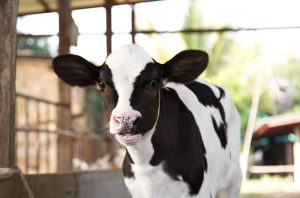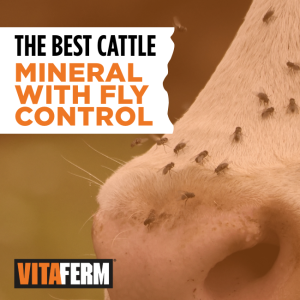
Feed Additive Categories: What Exactly Do They Mean?
Chris Cassady, Ph.D., Beef Technical Sales Manager, BioZyme® Inc
Global food demands continue to outpace available resources. Consequently, producers are continually asked to “do more with less” as urban sprawl, regulations and consumer concerns continue to add pressure to the agricultural industry. Animal performance is a major influence on profitability and achieving those extra pounds per head is based on excellent genetics, premium nutrition and optimum health. A growing emphasis in production agriculture is the use of feed additives, and the interest has cultivated from the link between the gut and overall animal health and performance. There are many pro- and pre-biotics available, and many fit into both all-natural and conventional programs. Both are engineered to benefit the host animal; however, they have many different targets, modes of actions and returns for your investment.
The animals we feed and care for contain a microbiome, and some (ruminants) are extensive and complex. An animal’s microbiome can contain bacteria, fungi, protozoa and much more, but their role in the gastrointestinal tract is simple. Their purpose is to digest, and ferment consumed feed, then convert it into nutrients that the host can utilize to produce meat, milk and eggs. Simply, if we feed the “bugs” in the animal’s gastrointestinal tract, then the “bugs” give off energy and protein that the animals can use for themselves. This symbiotic relationship results in high performing, healthy animals for the producer.
The difference between a pro- and pre-biotic can be simply defined. While both contribute to a benefit to their host, a producer can either add more beneficial, living organisms (probiotic) or feed/stimulate the ones that already exist (prebiotic). A probiotic can be derived from any isolated strain of bacteria, which makes it very specific to a desired outcome, like digestibility or rumen buffering. However, a probiotic is a living organism, and there are many things to keep in consideration. Living single-cellular organisms in the probiotic supplement can be sensitive to heat, moisture and acidity. This is important, because it must be handled and stored properly, and producers must hope it survives the low pH of a true stomach to be effective. Not to mention, the gut microbiome is sensitive to its environment. In grazing vs. grain fed situations for example, cattle rumen microbial populations look drastically different. Therefore, producers need to know exactly which one to add or they’ll be wasting their money and labor on an additive that is doomed to fail.
Alternatively, prebiotics come in the form of a substrate that is designed to fuel or stimulate the established microbial populations. They are not usually living organisms, so they are versatile in their handling capabilities and survivability. Therefore, they are cost effective and easy to administer to large groups of livestock in many forms, including processing chute side, mixed in a TMR, or mineral and protein supplements. Prebiotics serve as a growth medium for all the microbiomes, including fungi, and don’t target just one specific bacterial strain within a population of millions. Amaferm® is a precision prebiotic that is derived from a total fermentation product from a specific strain of Aspergillus oryzae. This prebiotic is unique in its ability to stimulate fungal branching and enzymatic activity, which accelerates the degradation of feed delivered to animals. Amaferm promotes the growth rates of fiber and starch digesting bacteria, as well as ones that scavenge lactate. Collectively, this bacterial stimulation allows for better feed utilization and a more stable gut pH, so that microbial and host health can be maximized. A robust and diverse microbiome yields performance and health benefits to the animal, which returns a significant return to the operation.
Producers are constantly asked to produce more with less with the vision of feeding the world. The adoption of feeding technologies will play a key role in meeting this goal. A cost-effective investment in a prebiotic like Amaferm gives their animals the tools to maximize performance from within and return more profitability to the producer.


